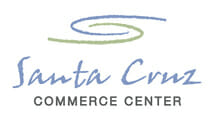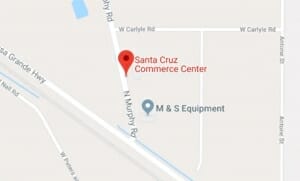How to Work with an Indian Tribe
An Interview with Phil Entz, Property Manager, Santa Cruz Commerce Center, Ak-Chin Indian Community
What is your background?
I have degrees in Urban Geography/Urban Development Law and Architecture. I started my first business in construction, then moved to architecture, and then started my current firm, which does project and property development management.
How long have you been working with tribes: on what kinds of projects and in what capacity?
We were first invited to work for a tribe in Arizona in 1991. Since then, we’ve been referred to a number of Native American Communities throughout Arizona and California. What we do is tailored to the tribe’s needs. For some, we’ve developed projects from scratch, including arranging the funding and hiring the architect and general contractor in a ‘cradle-to-grave’ approach as the overall development managers. For others, we do only portions of the tasks to fill in gaps in the tribe’s internal abilities. For the Ak-Chin Indian Community, I function as the Manager for the Ak-Chin Industrial Park Board, which oversees the Community’s industrial properties on behalf of the Community Council. The properties include the Santa Cruz Commerce Center, the former Phoenix Regional Airport, and an interstitial property known as the “Bunger Property.”
What do you do as the Property Manager of Santa Cruz Commerce Center?
Generally, I perform general management of the properties at the direction of the Board. This includes providing day-to-day direction to various vendors and consultants involved in maintenance of existing assets and the implementation of new development. I also perform pre-planning of improvements, negotiate leases, handle tenant concerns, and represent the Board in their coordination with economic and development entities.
How is the leasing process with a tribe different from off-reservation leasing?
Leasing at Ak-Chin is not much different than leasing from a private entity. All negotiations are in-house, as are all approvals. The steps to obtaining a lease include pre-qualifying, executing a letter of intent and agreeing on final lease language.
Is the Bureau of Indian Affairs (BIA) involved in lease transactions within the Community?
Yes, but only a minor involvement in the lease process. Since the property being leased is federal Reservation land, the BIA is a signatory on the lease. However, they are not involved in the initial negotiations, nor do they tend to be involved in the day-to-day operations of the leases or the Lessor/Lessee relationship.
Do you offer a kick-out clause if the Community cannot provide additional space in the event that a tenant needs to expand?
The Board hasn’t yet offered a clause like that only because it hasn’t come up in negotiations thus far. Since the key clauses of the lease terms are negotiated on a case-by-case basis, the potential for adding a clause for a specific qualified tenant is viable.
Are sublets allowed?
Yes, with Community approval. This is just to ensure the compatibility of uses with neighboring tenants.
Santa Cruz Commerce Center is now offering a build-to-suit opportunity. What’s involved with pursuing this option?
The potential lessee would need to pre-qualify to show that it’s financially capable of repaying the capital over the period of time intended for the lease. They’d also need to work closely with the Board to determine the best manner in which to implement the option that meets the lessee’s needs for space and timing. The balance of the process would be the same as any other lease negotiated via the Industrial Park Board, with Community Council providing the final approvals.
How are tenant improvements handled?
Where a potential tenant requires tenant improvements, or in the case of a build-to-suit building, the planned construction goes through an approval process that’s similar to any city or county. The project is filed with the Community’s Planning Department and goes through their Planning & Zoning Commission review process. The Board actually handles this process on behalf of the potential tenant to achieve the agreed improvements. It also helps that the Board utilizes existing Community vendors to handle the architecture and construction. This further simplifies the process for the tenant.
What is the process for obtaining building permits?
Since all submittals are handled internally by the Community, it is the Board that processes the plans for a building permit. Once the Tenant and the Board have agreed on the improvements and they have been approved by the Community; the Community then handles the permitting process.
What types of businesses are especially suited for the Santa Cruz Commerce Center?
Primarily warehousing, solar equipment production, clean agri-business including hydroponics, and light manufacturing facilities. We’re also allowing some service and destination-oriented commercial businesses along the Maricopa/Casa Grande Highway and Murphy Road frontages due to the high visibility.
What is the average cost-per-foot lease rate at Ak-Chin as opposed to in the City of Maricopa or Pinal County?
For Santa Cruz Commerce Center, the base lease rate in the Mesquite Building is running about 20% below current base leases in the City of Maricopa. This doesn’t take into account that there are no added lease taxes or business taxes on top. Land lease prices are similar to rural areas next to Casa Grande, Stanfield and Eloy, but the location is better.
How will energy costs be lower?
Ak-Chin owns all its own utilities, except natural gas and telecommunications and the rates are lower than off-Reservation utilities in this area of the State. For example, Ak-Chin Energy Services, the Community’s electric company, charges rates that average about 20 to 27% below the utilities that serve the surrounding communities.
What are some of the advantages of leasing on tribal land?
There are tax advantages, primarily in the area of property and business taxes. The Community currently has no business tax and businesses locating on-Reservation pay no city or county sales taxes. The Community also currently does not tax leases, so there’s no mark-up on the agreed lease price.
The Community also owns the majority of utility services except telecommunications and natural gas service. This has allowed the Community to set lower rates for water, sewer, electric and trash service than are found in surrounding communities, resulting in further saving to the tenant.
There’s also an advantage to having the Board and their representative as a central clearinghouse for all Commerce Center tenants both current and future. The Board can work with the other Community Departments and entities involved in approval process and accelerate solutions and approvals. This saves both time and money for the tenant seeking space in existing buildings or future buildings in the Center.
What are some of the challenges?
I think the greatest challenge is for a potential tenant understanding the advantages of an on-Reservation lease. The Board has, and will continue to, work with existing and potential tenants to help them understand the specific items that apply to establishing their business here – both those that are positive and any that may need to be addressed further. The Board regularly assists tenants in overcoming any “glitches” that might happen.
I also know there’s been some hype about lease problems at some other Reservations. The Ak-Chin Community has had great relationships with their tenants because they tend to view themselves as partners in helping in the tenant’s success.
How does Ak-Chin work to mitigate those challenges?
Part of my role is to help tenants understand the processes and to answer any questions that arise. If I can’t help on specific issue, there are a myriad of other resource within the Community that can assist. Generally, the Board acts as a single point of contact so that the tenant doesn’t have to fish around to find answers or resolve issues that arise. This simplifies things for the tenant and ensures that the Community and the tenant are always on the same page regarding the answers and actions.
In your opinion, is working with the Ak-Chin Indian Community different than working with other tribes?
When it comes to economic development – the Community is very progressive. Look around the Reservation. I’m not just referring to the Casino and its recent hotel expansion. But also the Southern Dunes Golf Course and its recent upgrades, the new family entertainment center, the renovation of the Regional Airport that will begin this year, the new Vekol Market that will open shortly. Even the new Mesquite Building in Santa Cruz Commerce Center just leased in less than a year.
The Community is extremely proactive in expanded investments in economic development, partnering, publicity, and accelerated economic growth. In this economy that’s not just different than other tribes, it different than most municipalities including cities, counties and entire regions.
The progressive approach and the previously mentioned “partners-in-success” approach combine to make Ak-Chin a very distinctive Community with which to work.



